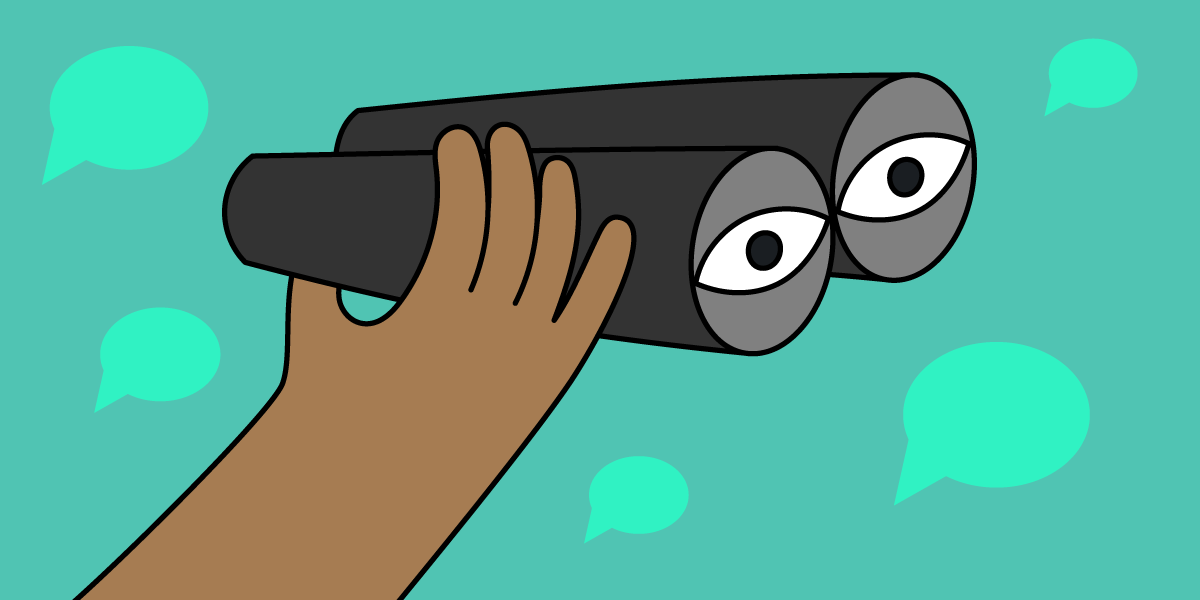
Hero’s journey examples are the most powerful archetypes of one of, if not the most, powerful mechanism known to humankind—stories.
Stories are the bedrock of…everything.
Without the ability to pass stories down from one generation to the next, we wouldn’t be able to have things like civilizations, cultures, or laws. ALL of those are examples of stories we’ve collectively agreed on about our shared reality.
Stories are the best way to teach, so some of the most valuable lessons you’ve learned come in parables.
And if stories are that important to every other aspect of life, why wouldn’t they be just as important when it comes to growing your business?
The best marketers are the best storytellers.
A brand is the story associated with your product or service.
When people think about your brand—whether you’re a solopreneur or part of a Fortune 500 company—you want them to have a certain narrative in mind. And it’s not about your product or service. Let me explain…
Get crystal clear on who your story is about
One rule of thumb you must remember about human beings:
Their favorite subject to think about is themselves.
So before we get into the StoryBrand Method, the hero’s journey examples, and how to use both in your business to acquire and retain more customers, you must understand who the story is and isn’t about.
The story your product or service tells shouldn’t be about you as the founder.
Nor should it be about the company.
It should be about the customer.
Most founders and companies make the mistake of putting the focus on themselves because they are also self-interested human beings. It’s easy for any of us to operate as if we’re the center of the universe.
You have to train yourself out of this behavior if you want to sell more of your product or service.
I can’t tell you how many times I’ve run into this in my career. I used to work at a website design and digital marketing agency.
Without fail, almost every local business client we had would have copy on their existing website that looked like this:
“Welcome to Green Legacy Lawn Care! In 1996, brothers Jim and John Thompson set out to create more than just a lawn care company—they wanted to build a lasting family business that would serve our community for generations. Starting with just one truck and a dream[…]”
This would be the first piece of copy someone would read when they hit the website.
The problem with that approach?
Nobody cares.
It’s also not very interesting or compelling.
Nobody cares how long you’ve been in business. Nobody cares why you started the business. Nobody cares about the legacy you’re trying to leave.
At least, they don’t care unless or until you attach your story to theirs. If I were to re-write the copy for a homepage like that, I would make the customer the hero of the journey with something like:
“Come home to a lawn as warm and welcoming as your family.”
See how that tells a mini-story that the visitor can see, smell, and feel.
I will show you multiple examples like this that will turn your customer into a hero. But I first had to make it clear that your customer has to be the hero.
Related:

Why hero’s journey examples?
The StoryBrand Method essentially breaks down how to use the classic hero’s journey archetype and story structure, apply it to your marketing, and use it to walk your potential customers through different awareness levels that lead to them buying a product.
It’s an excellent structure, and the technique works, but it makes sense to understand the ‘why,’ behind it before we dive into the what. These hero’s journey examples will help crystallize the philosophy behind the method.
People fall in love with the hero’s journey archetype because it’s a story they are dying to live out in real life. The average person can identify with the protagonist in some way (i.e., being limited by one’s specific circumstances) before he or she goes on their epic adventure.
Think about these examples and what they have in common:
- Harry Potter
- Katniss Everdeen
- Luke Skywalker
Harry Potter starts as a neglected orphan living in a cupboard under the stairs, constantly bullied and treated as insignificant by his family.
Then, he receives his letter to Hogwarts, his “call to adventure,” revealing he’s a wizard with a destiny greater than he ever imagined.
Katniss Everdeen lives in District 12, the poorest and most oppressed part of Panem. She’s struggling to survive and provide for her family. Then, she volunteers as tribute for the Hunger Games—thrusting her into an impossible situation where she must fight for her life.
Luke Skywalker starts as a farm boy on a desert planet who dreams of something greater but feels trapped. Then, he receives a message from Princess Leia and meets Obi-Wan, who tells him about the Force and his greater purpose.
Hero’s journey examples teach you about your customers (and humans in general)
People fall in love with the story arc and the characters in these hero’s journey examples because they see themselves in the “before” phase—feeling stuck, small, and unseen.
They crave a transformation.
If you want to get better at selling your product or service, you have to understand that people don’t buy products or services.
They buy transformations.
Your customer is trying to get from point A to point B, but they don’t know how to do it on their own. If you want to sell to them, make your product or service the bridge between where they are and where they want to be.
That’s why this storytelling structure works so well in marketing. Your customer is the protagonist, and your product/service is what helps them answer their call to adventure.
I’m reminded of this quote:
“The mass of men lead lives of quiet desperation.” —Henry David Thoreau
Maybe I’m being dramatic—but what if I’m not? If you think of your product as something that fulfills a deep, unspoken longing, you won’t just sell more—you’ll help people transform.
People don’t want a product. They want an adventure. They want to be shaken awake from the hypnotic rhythm of life.
They want something to believe in—a story that inspires them to act. They’re waiting for their call to adventure.
👆🏾This is the foundation for this post because understanding your customers is key to the success of your company that, strangely, most business owners don’t pay enough attention to.
Now that we have that out of the way, let’s talk about how the StoryBrand Method works, tie each step to classic hero’s journey examples, and show you exactly how to use it in marketing your product or service.
Here is a quick snapshot of the method before we dive in. It follows a seven-step storytelling formula that helps businesses clarify their message and position their customers as heroes.
Here’s the high-level breakdown:
- The customer is the hero
- They have a problem
- Your brand is the guide
- You give them a plan
- Call them to action
- Show what’s at stake
- Paint a picture of success
I took extra time to cover step one. Now let’s finish the remaining six.
They have a problem (and you must identify it clearly)
People don’t buy products or services—they buy solutions to problems. But in the StoryBrand Method, problems exist on three levels:
- External problem – The obvious, surface-level issue they need solved.
- Internal problem – The frustration, self-doubt, or emotional struggle behind it.
- Philosophical problem – The bigger belief about why this problem shouldn’t exist.
At the heart of every great story is conflict—someone wants something, but they can’t get it because of [obstacle].
That tension is what makes stories compelling, and it’s also what makes marketing effective.
Take Harry Potter as an example:
Harry wants to embrace his true identity and become a great wizard, but he can’t because he doesn’t know who he really is, and he’s trapped in a mundane life where the people around him actively suppress his potential.
Your customer is facing their own “living in the cupboard under the stairs” moment—stuck in a reality that doesn’t reflect who they truly are or what they’re capable of.
They want something—whether it’s a thriving business, a healthier body, or a beautiful home—but they can’t get it because of an obstacle standing in their way.
➡️ Business example: TurboTax simplifies your annoying headache
Before TurboTax, people had two choices: TurboTax understood their customers wanted to file taxes easily and with confidence, but they couldn’t because of these obstacles: Instead of marketing itself as just another tax software, TurboTax positioned itself as a guide that empowers customers: “Your taxes, done right—without the stress.” By addressing all three levels of the problem, TurboTax doesn’t just sell tax software—it gives customers peace of mind.
Let’s say you’re a fitness coach helping busy professionals lose weight and build strength who is trying to land more clients.
To sell them on your program, your messaging should address all three levels of their problem:
External problem (surface-level issue)
- Their perspective: I don’t have time to work out or meal prep.
- Your messaging: Our 20-minute high-intensity workouts burn 300 calories per workout and fit into your busy schedule—no gym required.
Internal problem (frustration and self-doubt)
- Their perspective: I feel frustrated and stuck because nothing has worked for me before.
- Your messaging: You don’t need more willpower—you need a system. You’ll get a customized plan tailored to your body type, lifestyle, and environment so you won’t have to worry about another failed fitness journey.
Philosophical problem (why this matters on a bigger scale)
- Their perspective: Being healthy shouldn’t be this complicated.
- Your messaging: You shouldn’t have to choose between your career or your social life and your health. We built our program for busy professionals like you so you can hit your fitness goals without sacrificing your life.
By speaking to all three levels of their problem, you’re not just selling a fitness program—you’re offering a path to transformation.
Your job isn’t just to sell them workouts or meal plans. It’s to help them see that they’re capable of becoming the strong, confident version of themselves they’ve always wanted to be.
Your brand is the guide
One of the most important characters in the hero’s journey is the guide.
The guide isn’t only there to give instructions.
Sometimes they help the hero see what’s possible, provide support in overcoming an internal challenge while staying out of it, or equip them with the tools and knowledge they need to succeed on their own.
Your brand can and should do the same thing.
Introduce your customers to the call to adventure—the opportunity to solve their problem—and then provide the support they need while they take the journey themselves.
Think about these hero’s journey examples from the perspective of a guide like Morpheus in “The Matrix,” Yoda in “Star Wars,” or Dumbledore in “Harry Potter.” They don’t fight the hero’s battles for them, but they do:
- Help the hero believe in themselves. (Yoda tells Luke, “Do or do not, there is no try.”)
- Give them tools and training. (Morpheus shows Neo the truth and teaches him to bend the rules of the Matrix.)
- Provide wisdom and encouragement along the way. (Dumbledore doesn’t fight Voldemort—he helps Harry see the path forward.)
Your brand should take the same role in your customer’s journey. Instead of making your brand the hero, position yourself as the trusted guide who helps them achieve their transformation.
➡️ Business example: Nike as the guide
Nike doesn’t say, “We make the best shoes.” That would make them the hero. Instead, “Just Do It” speaks directly to the customer’s internal struggle—the self-doubt, hesitation, or fear that keeps them from taking action. Nike steps in as the guide, not by bragging about their shoes, but by offering a simple, direct challenge: Just Do It. Example from “Building a StoryBrand 2.0” book
That’s what great brands do—they help their customers overcome internal obstacles and step into their full potential.
Let’s keep using the fitness coaching program as an example here.
If you’re a fitness coach, your marketing should make it clear that:
- Your client is the hero—you’re just there to guide them.
- You understand their struggles—and you can help them overcome them.
- You have a clear plan—so they don’t have to figure it all out alone.
When it comes to how you sell and promote your coaching, position yourself as the guide that will help them get the result without making it about you at all.
Instead of overemphasizing the fact that you’re a certified personal trainer with 10 years of experience, talk about how you’ve helped hundreds of busy professionals lose weight.
Make it about their transformation, not your coaching.
You’re simply the mentor who unlocks their potential.
Even when it comes to things like testimonials, a lot of companies make the mistake of positioning themselves as the savior instead of the guide who nudges the hero in the right direction (which follows the critical advice of making the customer the hero).
Instead of making yourself the hero:
“Sarah lost 15 pounds with our program.”
Make your client the hero:
“Sarah is a professional mom of two children under seven who thought she’d never find time for fitness with her busy life and many obligations. With the right guidance, she discovered she was capable of more than she imagined and found a way to fit our program into her tight schedule, which resulted in her losing 20 pounds. All credit goes to Sarah for doing the work. She just needed the right system.”
Give them a clear plan (make it easy to follow)
Every hero needs a map. Take this character from one of the many hero’s journey examples used in this piece so far.
Imagine Frodo setting out for Mordor without a clear path—he wouldn’t even make it out of the Shire.
A hero’s journey needs direction, and so does your customer’s transformation. If they don’t know exactly what steps to take next, they’ll hesitate.
➡️ Business example: Apple’s “idiot proof” set-up system
When you turn it on for the first time, there’s no confusion—just three simple steps: Example from “Building a StoryBrand 2.0” book
That’s it. No friction. No overcomplication.
Your business should feel the same way.
Let’s go back to our fitness coaching example.
Instead of overwhelming people with complex workout schedules and nutrition breakdowns, give them an easy path to success:
- Book a free strategy call.
- Get a personalized plan that fits your lifestyle.
- See real results in 90 days.
You can break down the cliff notes of the system in a high-level way so the customer understands it, but there’s no need to get in the weeds about every little detail.
If a customer can see themselves taking action without feeling lost, they’ll move forward.
Call them to action (tell them exactly what to do next)
Even the greatest heroes hesitate.
Neo almost didn’t take the red pill. Luke almost refused Obi-Wan’s invitation. Katniss didn’t raise her hand at first—she did it because she had to.
Your customer is standing at the edge of their own decision. They feel the tension: Do I stay where I am, or do I leap?
That’s where your call to action (CTA) matters. It’s the moment where hesitation turns into action.
A rule that I’ve learned (over the years running my own online business) is that there’s no such thing as a call to action that’s too clear, too obvious, too overt, or too simple.
➡️ Business example: Netflix dead-simple sign-up
All you see is a single bold statement: “Unlimited movies, TV shows, and more.” Right below it? A big red button that says “Get started.”
If you’re our fitness coach, you must keep the next step clear and simple. Make it very obvious what needs to happen next to sign up.
Instead of:
“Contact us to learn more.”
Use this:
“Get your free weight loss assessment by clicking the link below. I will give you a customized plan that you can use (whether or not you decide to work with me) based on your body type, schedule, and nutrition needs.”
A great CTA doesn’t just tell people what to do—it makes it impossible not to act.
Show what’s at stake (what happens if they don’t act)
These hero’s journey examples all come with stakes. There’s always something to lose.
- If Harry doesn’t go to Hogwarts, he stays trapped in the cupboard under the stairs.
- If Luke doesn’t leave Tatooine, he lives a life of regret, never knowing his true potential.
- If Katniss doesn’t volunteer, her sister dies.
➡️ Nonprofit example: The Truth anti-smoking campaign
Everybody knew smoking was bad, but the imagery of the Truth commercials helped you literally visualize what was at stake:
For our fitness coaching example, the stakes are quite high, too.
Instead of:
“Get in shape with our program.”
Try something like this:
“Sarah used to tell herself she’d get in shape ‘when things slow down.’ But life never slowed down. Her energy faded. Her confidence slipped. And one day, she realized she wasn’t showing up for her family the way she wanted. Every day Sarah put herself last, her body reminded her—with exhaustion, weight gain, and aching joints. She was losing herself. Until she made one decision: to take back her health. What will your story be?”
Make it real. Make them see themselves in Sarah. Because the true cost of inaction isn’t just weight gain—it’s losing the ability to live fully.
Paint the picture of success (what life looks like after they buy)
At the end of every great story, the hero isn’t the same person they were at the start.
- Luke becomes a Jedi.
- Neo becomes The One.
- Frodo saves Middle-earth—and returns forever changed.
People don’t buy products—they buy outcomes. They want to see who they’ll become after they say yes to your offer.
➡️ Business example: Lululemon and identity transformation
When you see Lululemon ads, they don’t just showcase leggings and sports bras. They paint a picture of what life looks like when you embody the Lululemon lifestyle: Lululemon’s message isn’t “Buy our leggings.” It’s “This is who you become when you wear them.” They aren’t selling clothes. They’re selling a version of you that’s strong, stylish, and fully in control of your life.
Back to our fitness coach example:
“Imagine a life where energy isn’t something you chase with coffee—it’s something you wake up with.
You roll out of bed before your alarm, your body light, strong, and ready for the day. In the kitchen, your kids squeal as you lift them onto the counter with ease, flipping pancakes while music plays in the background.
At work, you move with quiet confidence—people listen when you speak, your mind sharp, your posture strong. When you walk past a mirror, you don’t just glance and look away—you pause, catching a glimpse of someone who looks alive again.
This isn’t just fitness. It’s a return to yourself.”
Your customer needs to see the transformation before they buy.
Show them not just what they’ll get, but who they’ll become.
The ultimate lesson: Keep your customer the hero
The StoryBrand Method works because it aligns with the way our brains are wired. We are made to understand stories.
When you position your customer as the hero and your brand as the guide, your message becomes effortless, engaging, and clear.
People don’t want to hear about your company’s history or awards (*yawn*). They want to see how their own lives will change because of what you offer.
The businesses that win aren’t the ones shouting about themselves. They’re the ones painting a vision of transformation. The ones that are showing customers what’s possible if they say yes.
Because when people see themselves in the story, they don’t just listen.
They believe. They act. They buy.







